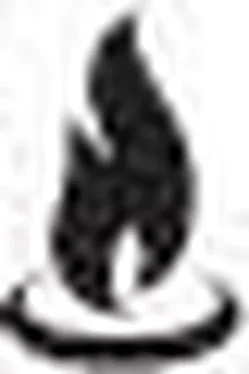Kathy Reichs - Bones to Ashes
Здесь есть возможность читать онлайн «Kathy Reichs - Bones to Ashes» весь текст электронной книги совершенно бесплатно (целиком полную версию без сокращений). В некоторых случаях можно слушать аудио, скачать через торрент в формате fb2 и присутствует краткое содержание. Жанр: Старинная литература, на английском языке. Описание произведения, (предисловие) а так же отзывы посетителей доступны на портале библиотеки ЛибКат.
- Название:Bones to Ashes
- Автор:
- Жанр:
- Год:неизвестен
- ISBN:нет данных
- Рейтинг книги:5 / 5. Голосов: 1
-
Избранное:Добавить в избранное
- Отзывы:
-
Ваша оценка:
- 100
- 1
- 2
- 3
- 4
- 5
Bones to Ashes: краткое содержание, описание и аннотация
Предлагаем к чтению аннотацию, описание, краткое содержание или предисловие (зависит от того, что написал сам автор книги «Bones to Ashes»). Если вы не нашли необходимую информацию о книге — напишите в комментариях, мы постараемся отыскать её.
Bones to Ashes — читать онлайн бесплатно полную книгу (весь текст) целиком
Ниже представлен текст книги, разбитый по страницам. Система сохранения места последней прочитанной страницы, позволяет с удобством читать онлайн бесплатно книгу «Bones to Ashes», без необходимости каждый раз заново искать на чём Вы остановились. Поставьте закладку, и сможете в любой момент перейти на страницу, на которой закончили чтение.
Интервал:
Закладка:
“Nah.” Ryan’s forehead wrinkled in thought. “This was a hospital. I’m thinking New Brunswick. Campbellton? Caraquet?” Ryan swallowed, then air-jabbed his fork in sudden realization. “I’ll be damned. It was Tracadie. There was a lazaretto in Tracadie.”
“The town of Tracadie? As in Évangéline? Obéline? Bastarache?” I was so shocked I sounded like a moron. Or a teacher calling roll.
“Trendy burg.”
“No one ever heard of Tracadie. Now the place is in my face every time I turn around.” I pushed back my chair. “Let’s see what we can dig up online.”
Ryan’s eyes dropped to his plate. Sighing, he laid down his fork. I knew what was coming.
“Time to go?” I tried for cheery. Failed.
“I’m sorry, Tempe.”
I shrugged, a false smile slapped on my face.
“I’d rather stay.” Ryan’s voice was very quiet.
“Then stay,” I said.
“I wish it was that simple.”
Ryan stood, touched my cheek, and was gone.
Hearing the door, Birdie lifted his head.
“What happened tonight, Bird?”
The cat yawned.
“Probably a bad move.” I rose and gathered our plates. “But the nookie was great.”
After showering, I logged onto the Internet and Googled the terms “leprosy” and “Tracadie.”
Ryan’s memory had been dead on.
30
ISURFED LONG INTO THAT NIGHT, CHASING LOOPS INTO LOOPS into loops. I explored the history of the Tracadie leprosarium, or lazaretto in local parlance. I read personal stories. Educated myself on the cause, classification, diagnosis, and treatment of leprosy. Worked through shifts in public policy concerning the disease.
With regard to Tracadie, I learned the following.
In 1849, after five years of staggering mortality, the New Brunswick board of health recognized the inhumanity of forced quarantine on Sheldrake Island. A site was chosen in a backwater called Tracadie, and meager funds were appropriated for the construction of a lazaretto.
The building was a two-story frame, upstairs for sleeping, downstairs for sitting and dining. Privies were out back. Small and basic, the new digs must have seemed lavish to the seventeen individuals who survived the island.
Though still imprisoned, the sick now had some lifelines to the outside world. Families were closer and could manage visits. Over the decades, doctors showed varying degrees of commitment. Charles-Marie LaBillois. James Nicholson. A. C. Smith. E. P. LaChapelle. Aldoria Robichaud. Priests came and went. Ferdinand-Edmond Gauvreau. Joseph-Auguste Babineau.
Despite better conditions, the number of deaths remained high in the early years. Moved by compassion, a Montreal-based nursing order, les Hospitalières de Saint-Joseph, volunteered to care for the sick. Arriving in 1868, the nuns never left.
I stared at grainy images of these brave sisters, somber in their stiff white wimples and long black veils. Alone, in the dark, I pronounced their musical names. Marie Julie Marguerite Crére. Eulalia Quesnel. Delphine Brault. Amanda Viger. Clémence Bonin. Philomène Fournier. I asked myself, Could I ever have been so selfless? Would I have had the fortitude to sacrifice and to such degree?
I pored over patient photos, scanned from the archives of the Musée historique de Tracadie. Two young girls, heads shaved, hands hidden under their armpits. A bushy-bearded man with a concave nose. A babushkaed granny with bandaged feet. Circa 1886, 1900, 1924. Fashions changed. Faces. The expressions of despair remained ever constant.
Eyewitness accounts were even more heartbreaking. In 1861, a lazaretto priest described a sufferer’s appearance in the end stage of the disease: “…features are not but deep furrows, the lips are big running ulcers, the upper one greatly puffed and turned up towards the seat of the nose which has disappeared, the lower one hanging over the glossy chin.”
The lives of these people were too painful to imagine. Despised by strangers. Feared by family and friends. Exiled to a living tomb. Dead among the living.
Now and then I had to leave the computer. Walk the rooms of my home. Brew tea. Take a break before I could continue.
And, always, my thoughts were plagued by the question of Harry. Where had she gone? Why didn’t she phone? My inability to contact my sister made me feel restive and helpless.
The lazaretto was rebuilt three times. Repositioned slightly. Expanded. Improved.
Various treatments were attempted. A patent medicine called Fowle’s Humor Cure. Chaulmoogra oil. Chaulmoogra oil with quinine or syrup of wild cherry. By injection. By capsule. Nothing worked.
Then, in 1943, Dr. Aldoria Robichaud visited Carville, Louisiana, site of a four-hundred-bed leprosarium. The Carville doctors were experimenting with sulfas.
On Robichaud’s return, diasone treatment was introduced at Tracadie. I could envision the joy, the hope. For the first time a cure was possible. The postwar years saw more pharmaceutical breakthroughs. Dapsone. Rifampicin. Clofazimine. Multidrug therapies.
The final tally shows 327 souls treated for leprosy in New Brunswick. In addition to Canadians, the sick included patients from Scandinavia, China, Russia, Jamaica, and elsewhere.
Besides the fifteen corpses left on Sheldrake Island, 195 were buried in Tracadie, 94 in the founders’ cemetery, 42 in the church cemetery, and 59 in the lepers’ cemetery beside the final lazaretto.
Hippo’s girl had come from Sheldrake Island. Thinking of her, I scanned the names of the dead. Some were pitifully young. Mary Savoy, seventeen. Marie Comeau, nineteen. Olivier Shearson, eighteen. Christopher Drysdale, fourteen. Romain Dorion, fifteen. I wondered, Did I have another young victim in my lab? A girl of sixteen who died an outcast?
My eyes drifted from my laptop to my cell. I willed it to ring. Call, Harry. Pick up a phone and dial. You must know that I’m worried. Even you can’t be that inconsiderate.
The thing remained obstinately mute.
Why?
I left my desk, stretched. The clock said two-twelve. I knew I should sleep. Instead, I returned to the computer, horrified yet fascinated by what I was learning.
The lazaretto’s last patients included two elderly women, Archange and Madame Perehudoff, and an ancient Chinese gentleman referred to as Hum. All three had grown old in the facility. All three had lost touch with their families.
Though cured with diasone, neither Madame Perehudoff nor Hum ever chose to leave. Both died in 1964. Ironically, Archange never contracted leprosy, though her parents and seven siblings had had the disease. Admitted as a teen, Archange endured to become the lazaretto’s final resident.
Down to one patient, the good sisters decided it was time to close shop. But Archange posed a problem. Having lived her whole life among lepers, she was unacceptable to any senior citizens’ residence in town.
I didn’t cry when I read that. But it was close.
After much searching, a place was found for Archange away from Tracadie. One hundred and sixteen years after opening, the lazaretto finally closed its doors.
The year was 1965.
I stared at the date, hearing yet another subliminal whisper.
As before, I struggled to bring the message to clarity. My exhausted brain refused to process fresh data.
A weight hit my lap. I jumped.
Birdie brrrp-ed and rubbed his head on my chin.
“Where’s Harry, Bird?”
The cat brrrp-ed again.
“You’re right.”
Gathering the feline, I crawled into bed.
Harry was sitting on a carved wooden bench outside Obéline’s gazebo, the totem pole casting zoomorphic shadows across her face. She was holding a scrapbook, insisting I look.
The page was black. I could see nothing.
Читать дальшеИнтервал:
Закладка:
Похожие книги на «Bones to Ashes»
Представляем Вашему вниманию похожие книги на «Bones to Ashes» списком для выбора. Мы отобрали схожую по названию и смыслу литературу в надежде предоставить читателям больше вариантов отыскать новые, интересные, ещё непрочитанные произведения.
Обсуждение, отзывы о книге «Bones to Ashes» и просто собственные мнения читателей. Оставьте ваши комментарии, напишите, что Вы думаете о произведении, его смысле или главных героях. Укажите что конкретно понравилось, а что нет, и почему Вы так считаете.










